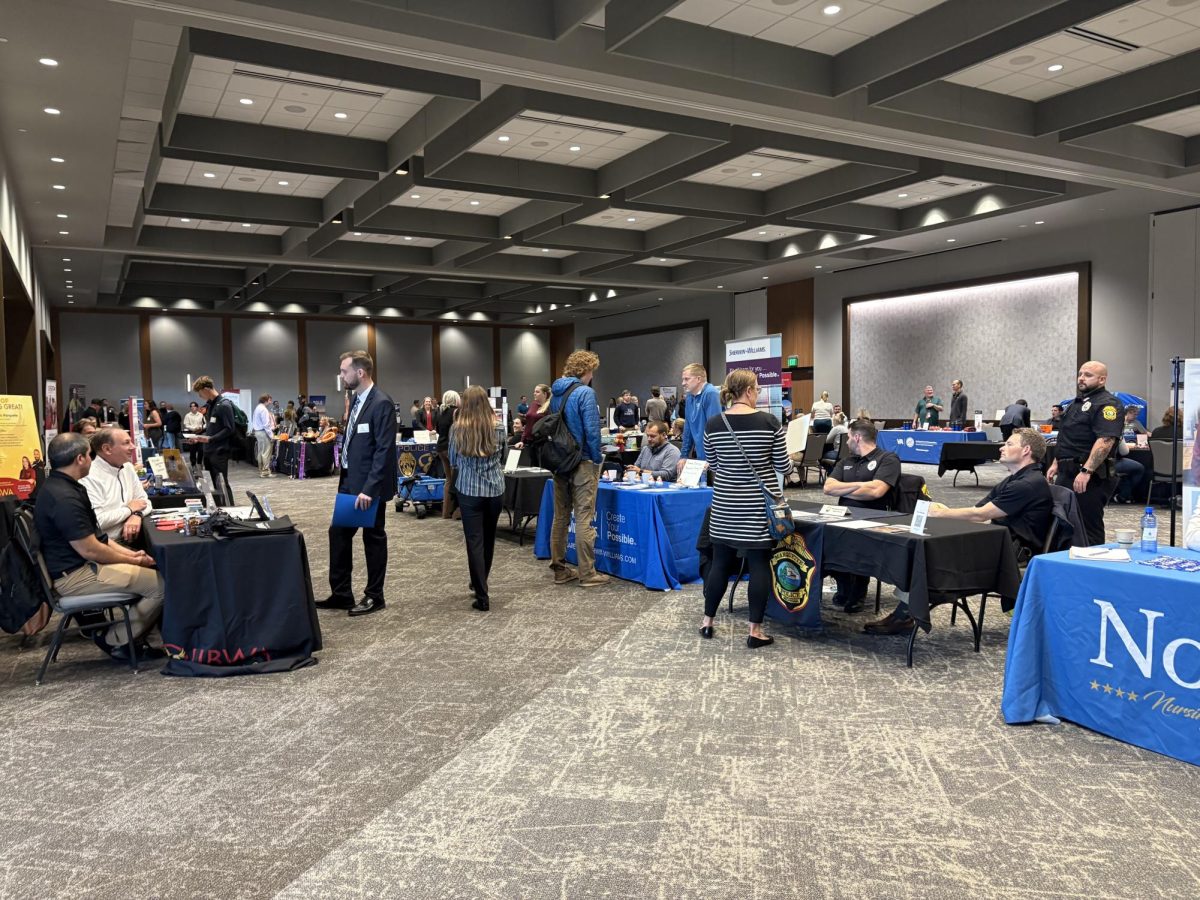As NMU continues with its budget reduction process, two task forces are working to find new models for hierarchical structure at all academic levels of the university.
A list of identified reductions was presented to the NMU Board of Trustees Finance Committee at its most recent meeting, with the Academic Affairs division facing the largest reduction total of $1.774 million. A $620,000 cut is slated for the College of Arts and Sciences.
To help find ways to streamline this division, the Provost and Vice President for Academic Affairs commissioned the Academic Affairs Restructuring Task Force (AARTF) during the winter semester, chaired by Dale Kapla, associate provost for undergraduate programming and faculty affairs.
“We had a large group—I had like 15 or 20 faculty members and a couple of administrators. Now, I’ve broken it down into a smaller group of seven,” Kapla said, adding the goal of the task force is not just to save money but cost-savings could be a result.
“Our charge is really to look at how we can make Academic Affairs more efficient and not just in terms of dollars,” he said.
Members of the AARTF are trying to develop a structure that would be more efficient for communication between faculty and administration.
“We’re looking at efficiencies in the chain of command if you will—the span of control,” Kapla said.
One goal of the AARTF is to promote more faculty governance, Kapla said. This means department leaders could have more managerial control over things like budget models and renaming programs within their department as well as authority to take care of all personnel budgets at the dean or department head level.
“The reason for that is because the departments and the deans know best how to spend their money and what sort of instructional costs they need to incur every single semester,” Kapla said.
The task force is also examining grouping certain departments within a particular college together.
“Things are being discussed at that committee level,” Kapla said. “So it’s just vetting through all those things. If we can come up with recommendations that do help reduce the costs, while still maintaining efficiencies and things, then that’s just all the better.”
Kapla plans to submit at least three types of structural recommendations to the provost by the end of December, with the idea one of those recommendations would be implemented in the fall.
David Donovan, physics professor and department head, is the chair for the second restructuring task force, which looks at whether NMU should change its leadership models for academic departments. He was also asked by the provost to convene this task force after serving as a department chair and then department head following the death of former department head David Lucas. Prior to that, Donovan served as a physics faculty
member.
“This is part of why I believe—I don’t know for sure, but this is part of why I believe I was asked to chair this. I’ve done both things,” he said.
Donovan, who also sits on the AARTF, said drawing a distinction between responsibilities of a department chair and department head is a challenge because there are legal implications to these distinctions.
Some primary differences are department heads become selected in consultation by departmental faculty but mostly administration, and department chairs are solely selected by faculty. A department head is considered a member of administration whereas a department chair is a member of the faculty. Department heads are also unable to be a part of the faculty union.
“We‘re looking to see if we should keep the model we have or if we should move to a department chair model,” Donovan said. “There has been a longstanding conversation—I would say going back at least 10 years, as to whether we should have heads or chairs.”
A restructuring period is seen as an ideal time to make a decision as to whether to change the leadership model at NMU.
“This comes up from different quarters at different times,” Donovan said. “Some want the change and others don’t.”
The goals for the second task force include: taking the first step to determine the difference between a department and a school within a department, finding the common duties of a department leader (not focused on just chairs and heads) and developing an
accurate compensation model for distinguishing department leaders.
Lastly, what Donovan called the most contentious of issues, is whether a faculty member should be in the union if that faculty member becomes a department head.
He said the task force is currently assessing different models to make an official recommendation to the provost by Christmas. A final decision for the recommendations are expected to be made by the provost sometime next semester.
“I don’t know if there is a direction that is predetermined. My suspicion is that we will present one of them with pros and cons and things like that,” he said.
The second largest reduction amount was in Academic Affairs, and was identified for the College of Health Sciences and Professional Studies at $492,000. Charles Mesloh, interim dean for health sciences and professional studies, discussed the possibility of a “decentralized” budget model for his department that has not yet been approved for next fall.
“Different departments have different models that work for them,” Mesloh said. “I’m in a position where all of my programs are lucrative. I’m currently formulating what my costs are for winter but I still think I’m well within my safety net.”
Mesloh said his department is trying to find cost-effective ways to make reductions that won’t negatively impact students. He used the “teach-out” method as an example, where if a recommendation is made to get rid of a class, then instructors would teach until the very last student that needs that class to graduate has completed the course before it was closed out. Mesloh said NMU is using different models than other universities to find the most appropriate budget models that work.
“This approach is unique though,” he added.























